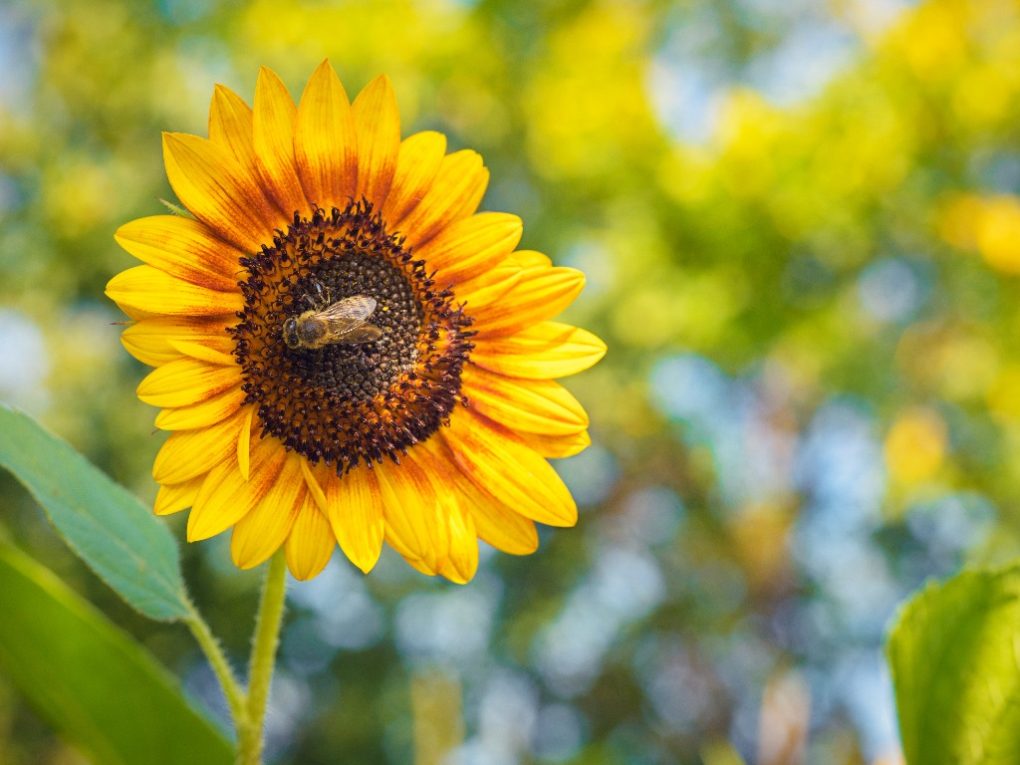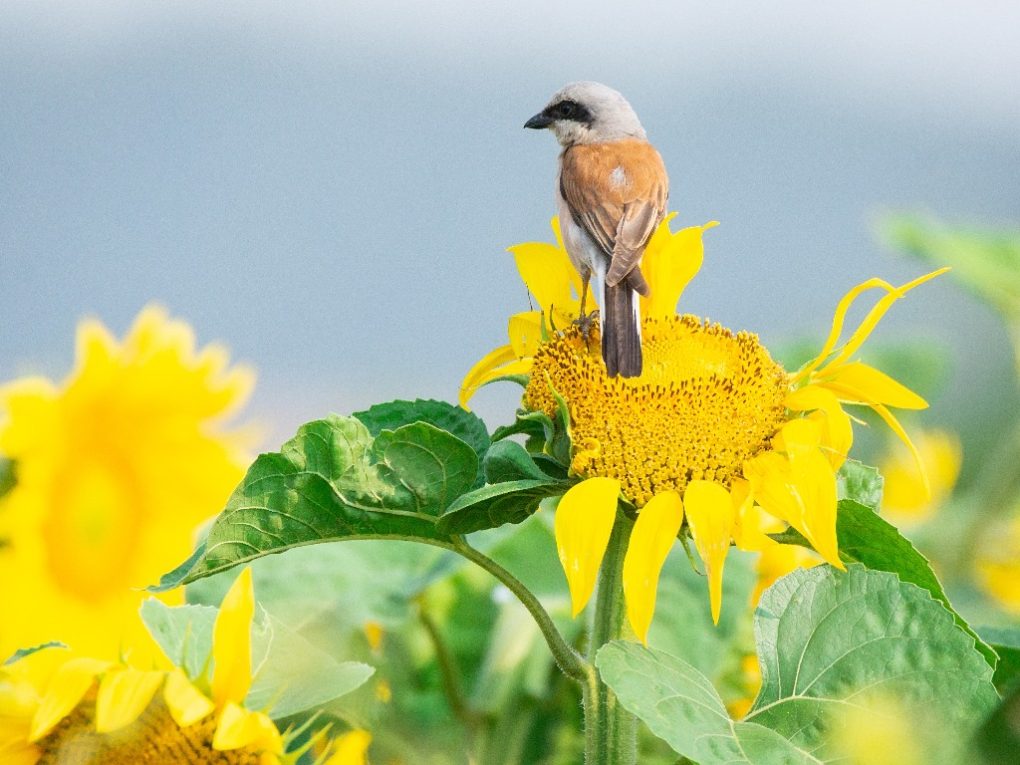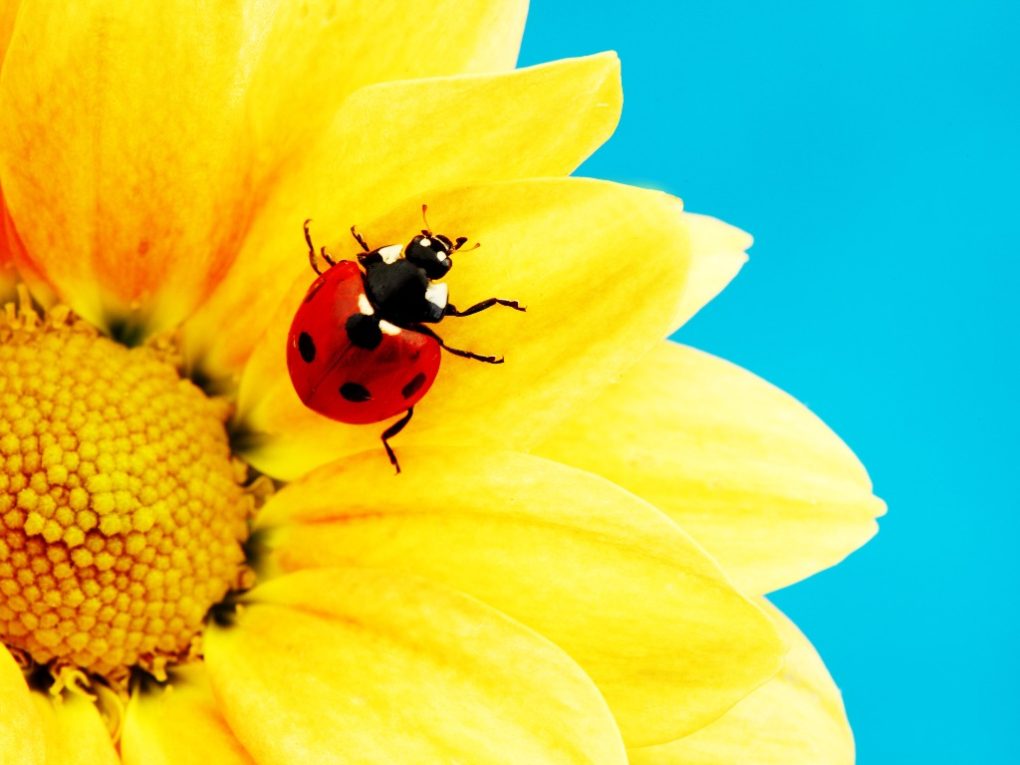What Eats Sunflower Plants: Animals and Insects That Eat Sunflowers and How to Manage Them
Several types of insects and animals may eat sunflower plants, including birds, squirrels, deer, aphids, and sunflower beetles. Sunflowers produce high-fat and protein seeds, making them a nutritious food source for many animals. Insects also feed on the nectar and pollen produced by sunflowers.
Additionally, sunflowers may provide shelter and habitat for animals and insects. The tall, sturdy stems and large leaves of sunflowers can provide a hiding place for small animals, while the flowers can attract pollinators and beneficial insects.

To prevent damage from pests, monitoring sunflower plants regularly and taking appropriate measures to control pests, if necessary, is important. This can include using insecticides or repellents, physical barriers such as netting or fencing, or planting companion plants that repel pests.
Table of Contents
Animals and Insects That Eat Sunflowers and How to Manage Them
Birds
Birds can eat sunflower plants in various ways, depending on the bird species and the stage of the plant’s growth. Many bird species, such as finches, jays, and sparrows, are seed-eaters attracted to sunflower seeds. They may perch on the plant’s stem or flower head and use their beaks to open the seed shells and extract the nutritious kernels.
Some bird species, such as hummingbirds and orioles, are nectar-feeders attracted to the sweet nectar produced by sunflower flowers. They may hover near the flowers and use their thin beaks to extract the nectar.
Species such as the American goldfinch may eat the leaves of sunflower plants. They may pick or strip the tender leaves from the stem to access the plant’s sap. Woodpeckers may eat the stem of sunflower plants. They may peck at the stem to access the plant’s sap or drill holes in the stem to build a nesting cavity.
Bird damage to sunflower plants can vary depending on the severity of the infestation. In small numbers, birds may cause little damage to the plant, but in large numbers, they can strip the plant of its seeds, flowers, leaves, and stem, leading to stunted growth or even death.

To prevent bird damage, gardeners can use netting or other physical barriers to keep birds away from the plants or plant extra sunflower seeds to provide enough for both birds and humans.
Squirrels
Squirrels are notorious for eating sunflower plants, especially their seeds. Squirrels are omnivores and will eat various foods, including sunflower seeds. They may climb up the stem of the sunflower plant or jump from nearby trees to access the flower head. Once they reach the flower head, they may chew through the seed’s outer shell and eat the nutritious kernel.
The said animal may also eat the stem of the sunflower plant. They may chew through the stem to access the plant’s sap or gnaw on the stem to sharpen their teeth. While squirrels generally prefer sunflower seeds, they may also eat the leaves of the sunflower plant. They may pick or strip the tender leaves from the stem to access the plant’s sap.
Deer
Deer are herbivores and may eat sunflower plants, especially when other food sources are scarce. They may eat the leaves of the sunflower plant, which can result in the plant’s stunted growth or even death. They may pick or strip the tender leaves from the stem to access the plant’s sap.
They may eat the stem of the sunflower plant, especially when they are young and tender. They may chew through the stem to access the plant’s sap, which can cause the plant to wilt and die. Deer may also eat the flowers of the sunflower plant. They may nibble on the petals or eat the entire flower head, which can prevent the plant from producing seeds.
Deer damage to sunflower plants can be severe, especially with a large deer population. To prevent deer damage, gardeners can use physical barriers such as fences, netting, or wire cages to protect their sunflower plants.
Additionally, using deer-resistant plants in the garden or deer repellents, such as natural scents, can help keep deer away from the plants. However, it is important to note that deer may become accustomed to certain repellents, so it is recommended to rotate the repellents used to prevent habituation.
Aphids
Aphids are small, soft-bodied insects that feed on the sap of sunflower plants. They have piercing-sucking mouthparts that allow them to pierce the plant’s leaves and stems and suck out the sap. This can cause the leaves to wilt and turn yellow or brown. Aphids feed on the undersides of sunflower plant leaves, where they can avoid predators and the sun, making it hard to spot them until they have caused significant damage.
This insect reproduces rapidly and can form large colonies on sunflower plants, quickly sap the plant’s energy, and stunt its growth. Additionally, the sticky honeydew excreted by aphids can attract other pests and diseases, further damaging the plant. Some species of aphids can also transmit plant viruses, which can cause severe damage or even death to sunflower plants.
Controlling aphids on sunflower plants can be challenging, but gardeners can physically remove aphids from the sunflower plant using their fingers or a soft brush. This is most effective when the infestation is small.
Insecticidal soap can be used to suffocate aphids and other soft-bodied insects. Gardeners should follow the label instructions carefully and apply the soap when the sunflower plant is in the shade or the early morning or evening to avoid burning the plant.
Ladybugs and lacewings are natural predators of aphids and can help control their population. Gardeners can attract these beneficial insects by planting dill, fennel, or yarrow flowers. Also, neem oil is a natural insecticide that repels and kills aphids. Therefore, gardeners should follow the label instructions carefully and avoid applying it during the day’s heat to prevent sunflower plants from burning.
Sunflower Beetle
Sunflower beetles are a common pest of sunflowers. These beetles are about 1/4 inch in size and have a metallic green or blue-black coloration. Sunflower beetles feed on the foliage of sunflowers, particularly the leaves and stems.

When sunflower beetles feed on the leaves of sunflowers, they create small holes and notches in the leaves. These holes and notches can reduce the plant’s photosynthetic capacity, resulting in stunted growth, reduced yield, and even death. In severe infestations, the beetles can also feed on the stem, causing the plant to become weak and possibly break.
Sunflower beetles typically lay their eggs on the underside of sunflower leaves in late spring or early summer. The larvae hatch from the eggs and feed on the leaves and stems of the sunflower plant. As the larvae grow, they become more destructive and can cause significant damage to the plant.
One method of controlling sunflower beetles is to use natural predators, such as ladybugs or lacewings, to control the beetle population. Another method is to use insecticides, which should be done cautiously to avoid harming beneficial insects and pollinators. Additionally, practicing good garden hygiene by removing plant debris and weeds can help reduce the beetle population.
